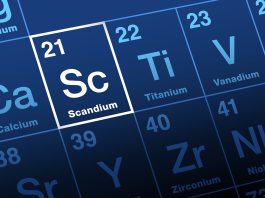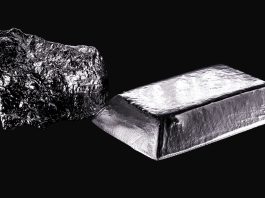Scandium Canada outlines its summer work focus, which includes advancing the Crater Lake Project for a fully integrated supply chain.
Scandium Canada is a Canadian technology metals company advancing one of the few primary scandium deposits globally, toward construction decision. Its flagship Crater Lake scandium and rare earth project in Québec could be the important reliable scandium supplier required by the market.
The Company is working on three parallel paths to advance the company overall. First, it is working on the project level, which includes the summer 2024 fieldwork programme and metallurgical pilot tests to move from its 2022 Preliminary Economic Assessment to the Pre-Feasibility Study (PFS) stage, which is expected in H1 2025.
Furthermore, it is working on developing relationships with potential large users of aluminium scandium alloys in all sectors.
Finally, the third path is overall corporate advancement and readiness, such as the recently announced signing of a Pre-Development Agreement with the Naskapi Nation of Kawawachikamach in April of this year, which confirmed the social acceptability of the project with this First Nation.
Summer work programme at Crater Lake
The 2024 summer on-site work programme at Scandium Canada’s Crater Lake Project began in June. The site is 200km north of Schefferville in northeastern Quebec. This season’s focus is on fieldwork related to the upcoming PFS.
Currently, access to the site is via helicopter or float plane, as there is no permanent road connecting the site to any existing highways. The pre-feasibility study will address building such a road.
The camp cook and general handyman arrived on site in mid-June to prepare the camp. Shortly after, staff from the independent engineering firm began their environmental data collection, which consisted of studies of fauna (birds and bats) and flora (inventory of vegetation and wetland to establish a baseline) and establishing baselines of water quality and fish habitats. This work is a prerequisite for the environmental permitting process.
The second significant summer activity is a planned 4,000m drilling campaign. This campaign will include geomechanical drilling to determine the optimal angles of the open pit slopes and diamond drilling to define mining reserves within the open pit. The drilling should be completed by the end of the summer season.
The Crater Lake site and the proposed path of the road from the mine site to the current paved road will be mapped using the LiDAR (Light Detection and Ranging) technology. LiDAR is done from an aeroplane and is used to accurately measure and map out the topography of the ground. The resulting information will be used to help plan out in detail the path of the proposed road and to accurately plan the infrastructure of the Crater Lake permanent camp and facilities.
The data collected on the proposed road will allow the Company and its consultants to more accurately determine the construction costs relating to the road. These costs will be reflected in the pre-feasibility study.
The Company is currently running a metallurgical test to optimise its mineral processing and hydrometallurgical flowsheet for scandium. A 600kg representative bulk sample from Crater Lake was shipped from Sept Iles, Qc, to the laboratory of SGS Canada Inc. in Lakefield. This 600kg sample is part of a 15-tonne bulk sample from Crater Lake that Scandium Canada stored in Sept-Iles to complete the development of its flowsheet.
In addition to the on-site fieldwork, the Company continues to be active in its efforts to establish and support a fully integrated Scandium supply chain, from mining to downstream applications. The Company is actively participating in events and activities linked to the use of aluminium scandium alloys, developing a network of end users and increasing awareness of the uniqueness of the Crater Lake project, as it can be the cornerstone of new markets in need of a long-term secure supply.
3D printing and additive manufacturing
Starting in 2021, Scandium Canada has been working with McMaster University to develop aluminum scandium powders for 3D printing parts that are otherwise difficult to produce using traditional manufacturing methods. The Company has developed aluminium scandium (Al-Sc) powders, whose composition is proprietary to Scandium Canada. The Company successfully executed the 3D printing of two aluminium alloys modified with scandium, exempt from solidification cracking.
A summary of this work has been submitted to the Company’s patent lawyers and is under review for potential patent applications. Further work is now being done on integrating the Company’s findings into industries and applications with short adoption cycles. Management is engaged in active discussions initiated with industrial players to test the printing and properties of the finished products for their applications.
Industrial uses of aluminium scandium alloys
Scandium Canada has identified different industries which could benefit from the use of aluminium scandium alloys. One of them is the solar panel industry. As the solar panel industry experiences rapid growth, there is a pressing need to reduce its carbon footprint.
Aluminium scandium alloys offer lightweight, high-strength properties and corrosion resistance, making them ideal for enhancing the efficiency and performance of solar panel frames. Adopting aluminium scandium alloys in solar panel frames could contribute to achieving this goal by reducing the overall weight of the panels and improving their durability.
To this end, the Company is currently engaged in producing complex profiles of solar panel frames to be tested by an important solar panel manufacturer.
The Company is actively pursuing other prototyping efforts to demonstrate the numerous advantages of using aluminium scandium alloys.
Keep following the story as new developments are shared.











